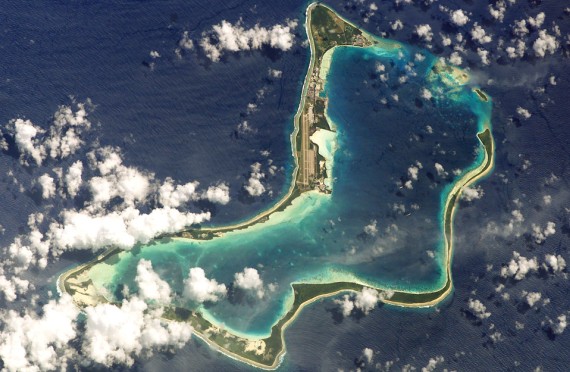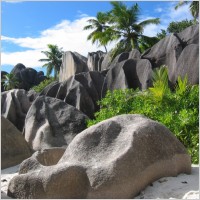
I was introduced to La Cuisine Seychelloise in August 1975, after a private yacht I helped crew docked in the port of Victoria, Mahe, Seychelles on the day after the Assumption Day festivities had ended.
By late morning we received clearance from the port authorities, and my husband and I were allowed to step ashore on the tropical paradise archipelago of the Seychelles. We had spent thirty days of mostly hellish weather in monsoon season crossing the Indian Ocean (from Sri Lanka to Diego Garcia) and another week of battering storms from Diego Garcia to the Seychelles. Physically and emotionally drained, we asked the English Captain to give us permission to disembark in Port Victoria. Knowing he needed crew to sail on up through the Suez Canal, he was reluctant to let us go. But knowing we were unhappy about the weird things happening on board between him and his crazy Israeli girlfriend (that’s another story!), he finally agreed to give us our passports and allow us to leave the yacht with our belongings. Prior to this adventure, I knew nothing about Maritime law and a captain’s supreme authority to do just about anything he wants, including not allowing passengers to leave the ship.
Grateful to touch solid ground again, I took a few deep breaths and shed happy tears. No more rubber sea legs, sea sickness, and no more being chained to the railing when working on deck. We had somehow managed to survive storm after storm, giant wave after walls of giant waves, and were now free to walk about on earth again. In paradise no less. Our first stop was the bank to exchange money. Next stop, lunch at a restaurant in the harbor! Real food? What a treat! Our eyes of course were bigger than our stomachs and we ordered more than we could possibly eat. We asked an Australian couple, dining at a table near by, for lodging recommendations. They immediately referred us to a private B & B owned by Eveline Man-Cham. “Her cooking is the finest,” the woman told me. “The country’s traditional cuisine. Creole cooking! You’ll want to eat there all the time.”
After lunch, and receiving numerous tourist tips from the waiters and other diners, we hired a taxi to take us to Mrs. Man-Cham’s place. We checked in and were given a snack of fried breadfruit cakes with afternoon tea. I oohed and aah-ed, and asked for the recipe. Mind you I didn’t have a clue what breadfruit was but Mrs. Man-Cham was happy to show me the breadfruit trees and explain the variety of ways the Seychelloise used it in cooking and baking. She invited us to join them for dinner before we left to explore the nearby beaches.
“I’ve prepared ladob patat for dessert,” she said as we were leaving. I obviously looked confused. She smiled and added, “sweet potato pudding.”
“Sounds delicious,” I replied. “We’ll join you.”
I spent hours walking along the beautiful white sandy beaches letting the topaz water tickle my toes. No one in sight. Heaven on earth! My husband enjoyed snorkeling and we sat on the beach and watched a glorious sunset.
Later that evening we enjoyed an exquisite dinner. Mouth watering delicious, from the Soupe de Tectec ((clam cooked in tomatoes, garlic and ginger), to the Gros Bourgeois de L’Ile Mahe (baked snapper with sauce), to the Cochon de lait rÙti (roasted pig), served with the Salade De Millionnaire (palmheart), followed by a Beignet de Giraumon (Pumpkin Donut), and last but not least the Ladob Patat.
We tried a few local restaurants during our three week holiday in the Sychelles, but always returned to Mrs. Man-Cham’s for the finest Creole Cuisine Seychelloise (a mix of Chinese, Indian, and French flavors).
On the morning of our departure, Mrs. Man-Cham presented me with a copy of her cookbook, 4th Edition 1973. I’ve treasured it all these years and often use her recipes.
Her son, Sir James R. Mancham became the Founding President of the Republic of Seychelles when the country became an independent sovereign State on the 29th of June 1976. Sometime later, I heard on the news that when he went to England, to attend the Jubilee of Queen Elizabeth II, he was deposed in a bloodless coup. A bloodless coup? Now that could only happen in paradise.








 Excerpt from Chapter One
Excerpt from Chapter One


